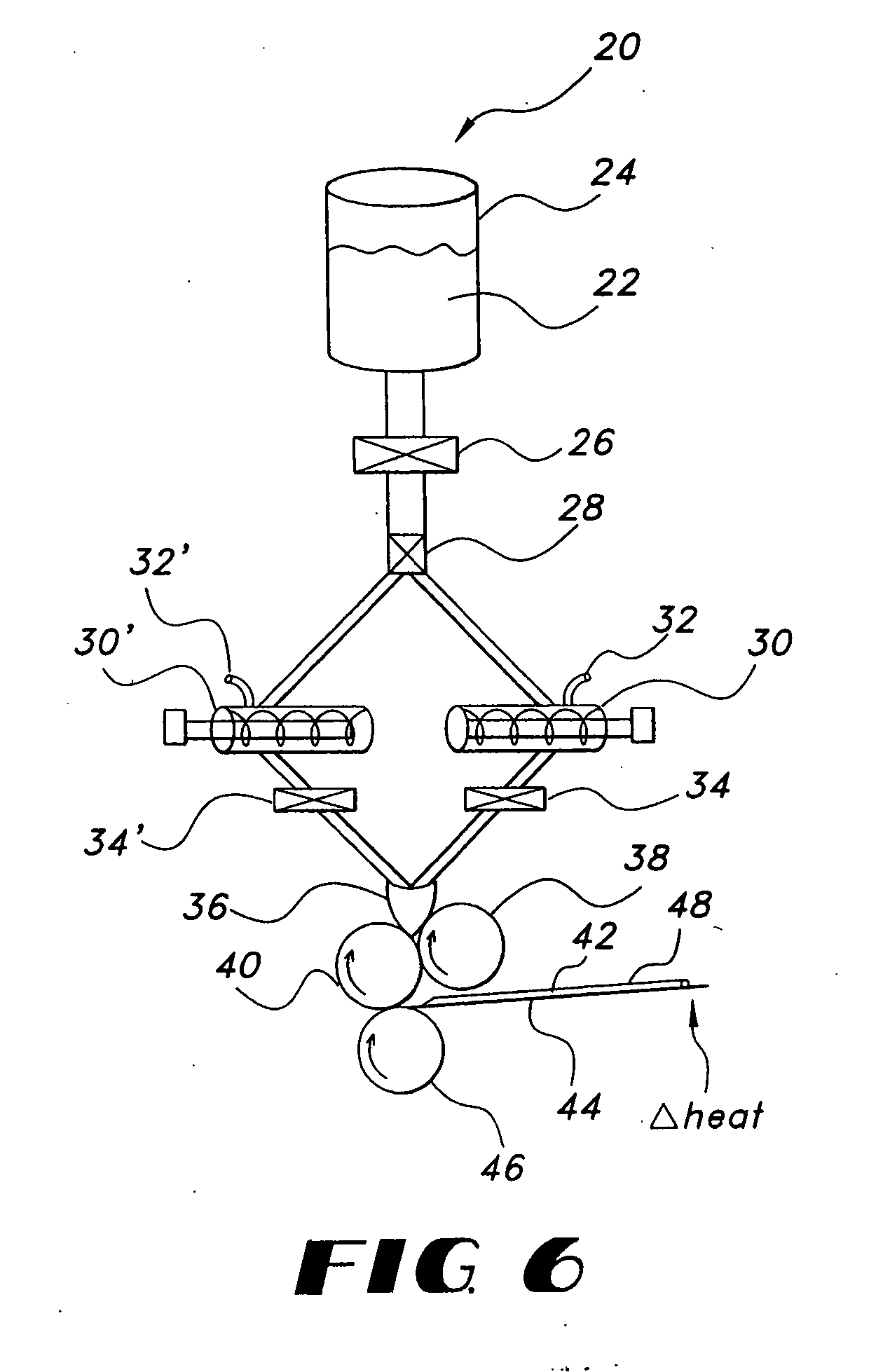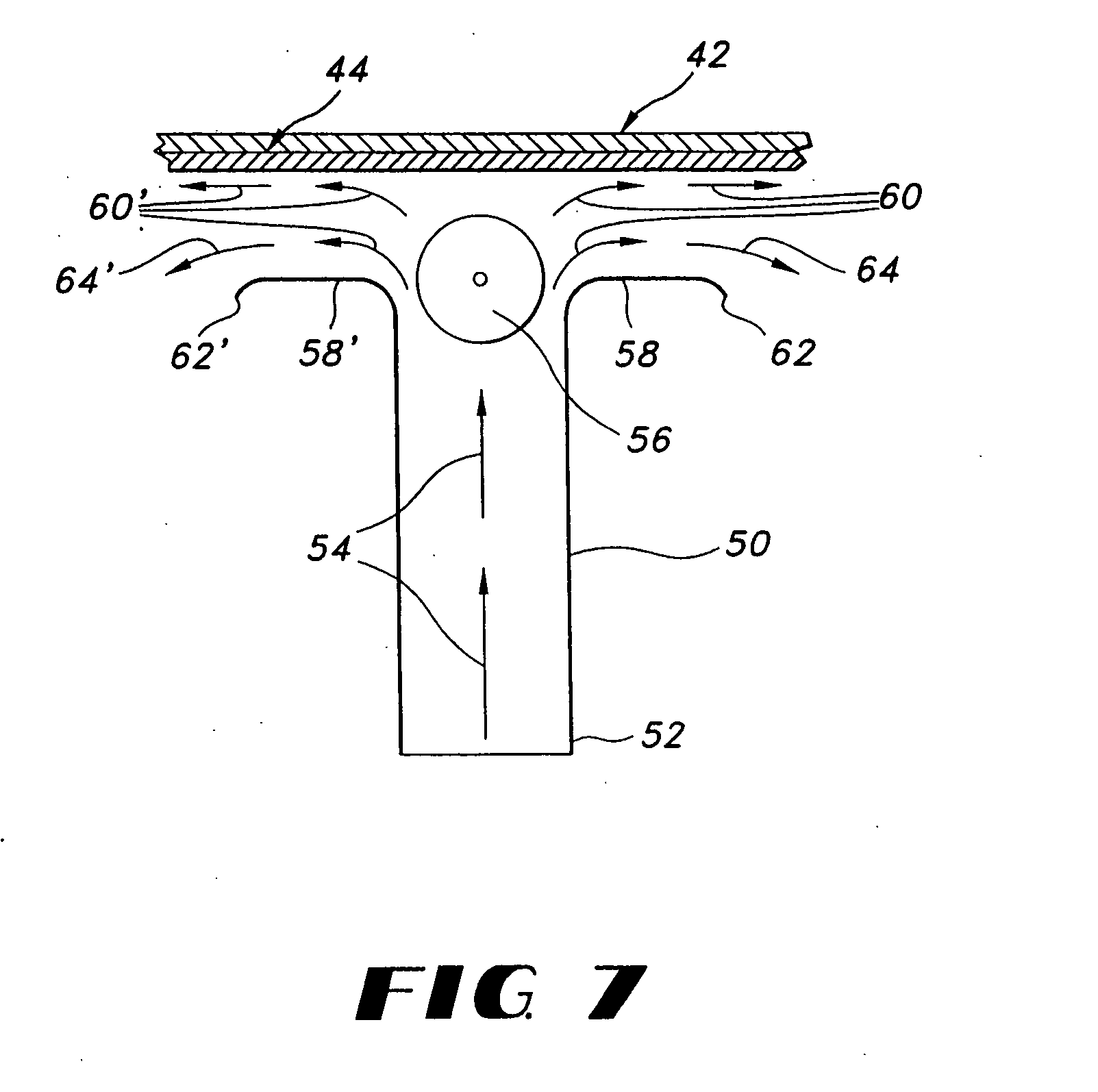Thin film delivery systems for volatile decongestants
a delivery system and volatile decongestant technology, applied in the direction of powder delivery, drug compositions, medical preparations, etc., can solve the problems of limited active components to less than one, limited preparation's decongestant capability, and failure to provide a film that incorporates a drug with sufficient uniformity
- Summary
- Abstract
- Description
- Claims
- Application Information
AI Technical Summary
Benefits of technology
Problems solved by technology
Method used
Image
Examples
Embodiment Construction
Preparation of Menthol-Containing Film by Depositing Menthol Crystals onto the Film or onto a Film-forming Composition
[0133] A film-forming composition, Composition A in Table 1 below, was prepared and mixed under vacuum to remove air bubbles. In further detail, plasticizer (propylene glycol), glycerin, and anti-foam agent (polydimethylsiloxane emulsion) were added to water with stirring over a short period of time of about 15 minutes. Hydroxypropylmethyl cellulose (Methocel.TM. E15), hydropropyl cellulose, starch, precipitated calcium carbonate, and sweetner / tastemasking flavor (Sucralose and Magna Sweet) were added to the above mixture with mixing or stirring. The stirring was set at 100 rpm using an axial impeller. Stirring continued for another 36 minutes with a vacuum being applied towards the end to remove air bubbles.
1 TABLE 1 Film-forming Polymer Composition Composition A Ingredient (weight parts) Hydroxypropylmethyl cellulose 6.75 Hydroxypropyl cellulose 6.75 Starch 2.5 Swe...
PUM
 Login to View More
Login to View More Abstract
Description
Claims
Application Information
 Login to View More
Login to View More - R&D
- Intellectual Property
- Life Sciences
- Materials
- Tech Scout
- Unparalleled Data Quality
- Higher Quality Content
- 60% Fewer Hallucinations
Browse by: Latest US Patents, China's latest patents, Technical Efficacy Thesaurus, Application Domain, Technology Topic, Popular Technical Reports.
© 2025 PatSnap. All rights reserved.Legal|Privacy policy|Modern Slavery Act Transparency Statement|Sitemap|About US| Contact US: help@patsnap.com



